Science & Technology: March 2025 UPSC Current Affairs | Science & Technology for UPSC CSE PDF Download
India’s AI Revolution
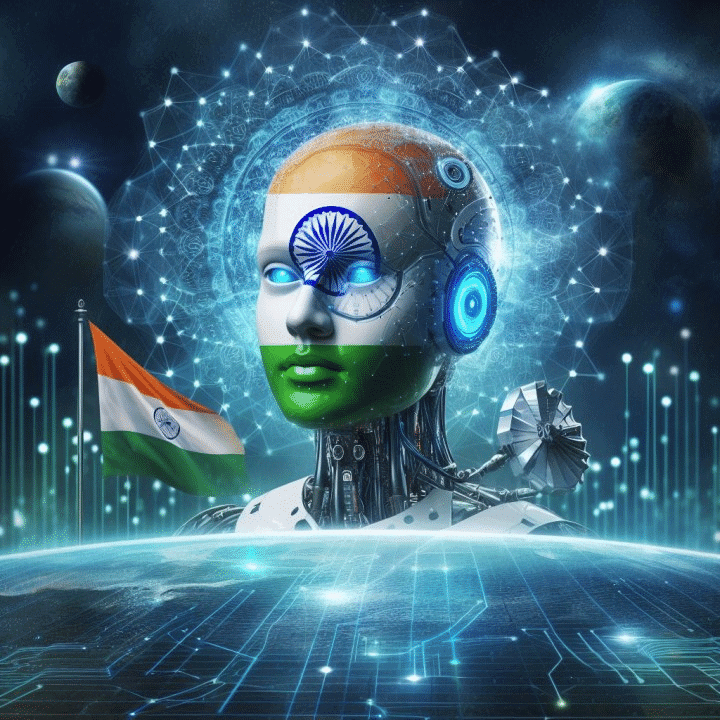
Why in News?
India is experiencing a comprehensive transformation in Artificial Intelligence (AI), driven by proactive government policies under the IndiaAI Mission. This mission aligns with the broader vision of Viksit Bharat 2047, aiming to establish India as a global leader in AI.
How is India Emerging as a Global AI Powerhouse?
Strengthening AI Infrastructure:
- The government is building a high-performance computing facility with 18,693 GPUs, surpassing DeepSeek’s capacity and reaching two-thirds of ChatGPT's scale.
- An Open GPU Marketplace enables affordable access to high-end computing for startups, students, and researchers.
- India is aiming to develop its own GPUs within 3–5 years to reduce reliance on imported technologies, including quantum chips.
- The IndiaAI Dataset Platform offers anonymized, high-quality datasets for AI research.
- AI Centres of Excellence (CoEs) have been launched in sectors like Healthcare, Agriculture, and Sustainable Cities. A new CoE for Education has received ₹500 crore in the 2025 Union Budget.
AI Skilling & Education:
- Five National AI Skilling Centres are being established to equip youth with AI industry skills in line with the “Make for India, Make for the World” initiative.
- The National Education Policy (NEP) 2020 incorporates AI education across all academic levels.
- India ranks #1 in Global AI Skill Penetration (Stanford AI Index 2024), with a 263% rise in AI talent since 2016 and a 14-fold increase in AI-skilled professionals (2016–2023).
- With around 520 tech incubators, India is now the 3rd largest startup ecosystem globally.
Development of Indigenous AI Models:
- BharatGen is the world’s first government-funded multimodal LLM for public services.
- Sarvam-1 is a 2-billion parameter model supporting 10 Indian languages for content generation and translation.
- AI Kosha provides non-personal datasets to empower startups and researchers.
- Tools like Digital India BHASHINI and Chitralekha promote digital inclusivity through multilingual AI support.
AI Integration with Digital Public Infrastructure (DPI):
- AI is enhancing platforms like Aadhaar, UPI, and DigiLocker for better service delivery.
- Applications include AI-based crowd monitoring in railways and MuleHunter.AI, developed by the RBI to detect fraudulent bank accounts.
AI-Driven Economic Growth:
- 80% of Indian companies have adopted AI as a strategic priority; 69% plan to increase investments in AI by 2025.
- Funding for Indian Generative AI startups has surged 6x, reaching $51 million in FY2025.
- India accounts for 16% of global AI talent, powering innovations in automation, healthcare, and fintech.
- 78% of SMBs using AI reported higher revenues.
- The AI market is growing at 25–35% CAGR, and AI talent demand is projected to reach 1 million by 2026.
AI Regulation & Global Leadership:
- Regulatory measures include the IT Act 2000, Principles for Responsible AI (2021), and National AI Strategy (2018).
- India is taking a balanced approach to regulation, addressing concerns like deepfakes and privacy without stifling innovation.
- India is shaping global AI policies by hosting the Global INDIAai Summit 2024 and engaging with platforms like GPAI, G20, and the Paris AI Summit 2025.
Growth of India’s Biotechnology Sector
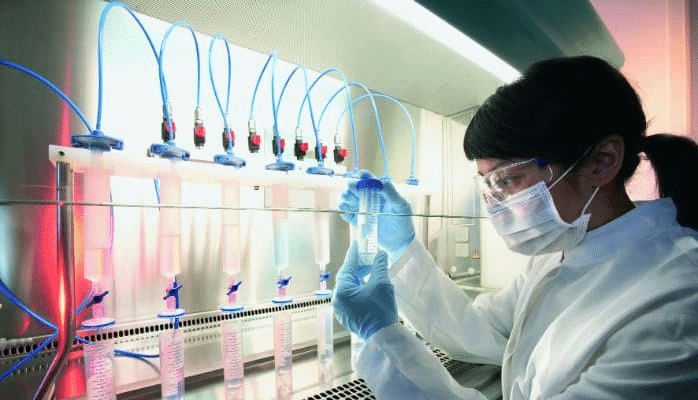
Why in News?
At the “Emerging Innovations in Biochemistry and Biotechnology” conference, India’s Union Minister of Science & Technology emphasized the growth of the country’s biotechnology sector and highlighted the untapped biotech potential of the Himalayan region, particularly Jammu and Kashmir (J&K).
Key Facts About India’s Biotechnology Sector
Overview: Biotechnology involves using biological organisms, systems, or processes to develop products and technologies that serve fields like agriculture, healthcare, industry, and environmental sustainability.
Types of Biotechnology:

Growth and Potential: India’s bioeconomy has experienced significant growth, expanding from USD 10 billion in 2014 to USD 130 billion in 2024. The country aims to reach USD 300 billion by 2030.
Opportunities in J&K: The region's rich biodiversity and medicinal plants provide promising prospects for pharmaceutical and herbal product development.
- Biotech research can enhance high-altitude crop resilience and yield.
- Notable programs include the Aroma Mission and the Floriculture Revolution, which focus on commercial flower farming.
Major Developments in 2024:
- Launch of the world’s first Human Papillomavirus (HPV) vaccine.
- Discovery of ‘Nafithromycin,’ a novel indigenous antibiotic.
- India’s first successful gene therapy trial for Hemophilia.
Key Government Initiatives:
- BioE3 Policy and Anusandhan National Research Foundation (NRF).
- Bio-RIDE Scheme: Growth from 50 biotech startups in 2014 to a projected 9,000 by 2025.
Global Innovation Performance:
- India improved its Global Innovation Index ranking from 80th in 2014 to 39th in 2024.
- The country is now 3rd in the Asia-Pacific and 12th globally in biomanufacturing.
- More than 5,352 Indian scientists are among the top 2% of researchers worldwide.
Space Debris Crisis
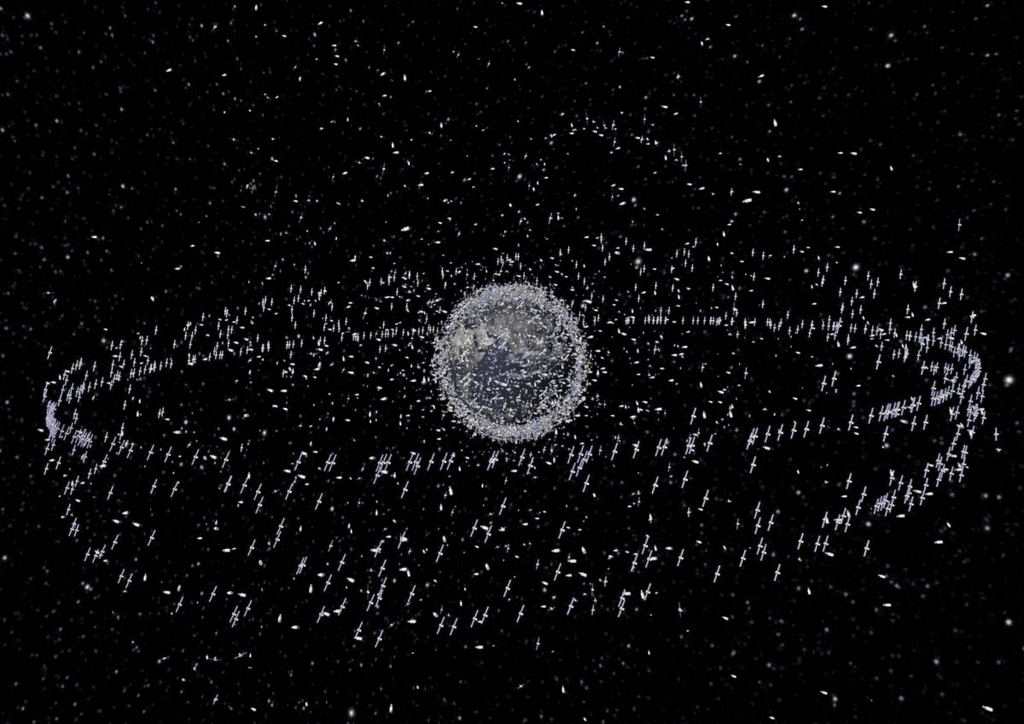
Why in News?
A 500-kg metal object recently crashed in Kenya, raising alarms over the growing problem of space debris and the urgent need for stronger global accountability and safety measures for re-entering objects.
What is Space Debris?
- About: According to the UN Committee on the Peaceful Uses of Outer Space (COPUOS) ‘Space debris is all man-made objects, including fragments and elements thereof, in Earth orbit or re-entering the atmosphere, that are non-functional’.
- It includes defunct satellites, rocket stages, and fragments from explosions or collisions.
- Origin: Most space debris comes from on-orbit breakups i.e., satellites or rocket stages explode, collide, or fragment in space.
- NASA estimates 23,000 debris pieces larger than a baseball, 500,000 marble-sized scraps, and 100 million fragments over one millimeter orbiting Earth.
- Space Debris Destruction: Debris loses altitude and burns up on re-entry due to atmospheric drag. It is intensified by the 11-year solar activity cycle that expands the atmosphere, accelerating the decay of low-orbit debris.
Associated Risks:
- On-Orbit Risks: Large debris can destroy satellites, while even 1 cm fragments can disable spacecraft. Millimeter-sized particles erode surfaces and damage solar panels.
- Re-entry Risks: Most debris burns up, but some large fragments may reach Earth, though the risk of injury is very low.
- Kessler Syndrome: Kessler Syndrome is a chain reaction of debris collisions creating even more debris, potentially making orbits unusable for future space missions.
International Regulations:
- Outer Space Treaty (1967): Article VI of the treaty makes states responsible for all national space activities, including private ones, but lacks enforcement mechanisms.
- Convention on International Liability for Damage Caused by Space Objects (1972): It imposes absolute liability for space object damage on Earth, requiring no proof of negligence, but enforcement is weak.
- Voluntary UN Guidelines on Deorbiting: The UN recommends deorbiting satellites within 25 years, but compliance rate is only around 30%.
Initiatives to Remove Space Debris:
- Global: ClearSpace-1 and Remove DEBRIS (by ESA), OSAM-1 (NASA).
- India: Debris Free Space Mission (DFSM), Network for Space object TRacking and Analysis (NETRA).
HeroRATS for Tuberculosis Elimination

Why in News?
A Tanzanian non-profit organization is training African giant pouched rats—known as HeroRATS—to detect Tuberculosis (TB) with high accuracy. These rats offer a rapid and affordable screening method, especially valuable in resource-limited regions. Their application could significantly benefit TB detection efforts in countries like India.
Key Findings of the HeroRATS Research
- Exceptional Olfactory Ability: HeroRATS possess highly sensitive olfactory receptors, enabling them to detect diseases like TB by smelling sputum samples (mucus from the lungs).
- Efficient Screening: The trained rats can screen up to 100 sputum samples in just 20 minutes, whereas traditional diagnostic methods can take 3–4 days.
- Confirmation Methods: Positive samples identified by the rats are further confirmed through Ziehl-Neelsen and fluorescent microscopy.
- Improved Detection in Children: The use of HeroRATS has doubled TB detection rates in children, compared to conventional tests.
- Effective in Low Bacillary Load Cases: The rats were found to be six times more effective at detecting TB in cases with a low concentration of bacteria—situations where traditional microscopy often fails.
How HeroRATS Can Support India’s TB Elimination Efforts
- Rapid, Low-Cost Screening: HeroRATS offer a quick and cost-effective method for detecting TB, particularly useful for identifying cases in children and patients with smear-negative samples.
- Strengthening Early Diagnosis: By improving early detection, these rats can help reduce TB transmission and disease burden.
- Integration with NTEP: India could integrate this method into the National Tuberculosis Elimination Programme (NTEP) via a phased rollout, starting with states that have a high TB burden.
- India’s TB Scenario:
- India has the world's highest TB burden, with two deaths every three minutes.
- The NTEP, under the National Health Mission, aims to eliminate TB in India by 2025—five years ahead of the global 2030 target.
- From 2015 to 2023, TB incidence in India declined by 17.7% (from 237 to 195 per 100,000), and TB-related deaths reduced by 21.4% (from 28 to 22 per lakh population).
What are the Key Facts About Tuberculosis?
- About: TB is a bacterial infection (Mycobacterium tuberculosis) affecting the lungs, spreading through the air.
- Preventable and curable with antibiotics. About 25% of the global population is infected, but only 5–10% develop symptoms.
- Risk Factors: Weak immune system, diabetes, malnutrition, tobacco, and alcohol use.
- Diagnosis: WHO recommends rapid molecular tests (Xpert MTB/RIF Ultra). Traditional methods struggle with low bacterial loads, especially in children difficult due to their inability to produce sufficient sputum for testing.
- Prevention: The Bacille Calmette-Guérin (BCG) vaccine is given to infants to prevent TB.
- Treatment: Standard TB treatment lasts 4-6 months. Incomplete treatment leads to drug-resistant TB.
- Multidrug-resistant TB (MDR-TB): It is resistant to isoniazid and rifampicin (medicines used to treat TB), treatable with costlier alternatives.
- Extensively Drug-Resistant TB: It is more severe, with limited treatment options.
- TB and Human Immunodeficiency Virus (HIV): HIV patients are 16 times more vulnerable to TB, a leading cause of their deaths.
Quantum Nature of Gravity

Why in News?
A new proposal published on October 29, 2024, suggests an experiment that could provide direct evidence for quantum gravity, unifying general relativity and quantum mechanics. A new experiment proposes testing weak gravitational fields at the quantum level, a historic breakthrough in physics if successful.
What is Quantum Gravity?
- Quantum Gravity is a theoretical framework that aims to unify general relativity (which explains gravity at large scales) and quantum mechanics (which governs subatomic particles).
- Since gravity behaves differently from the other fundamental forces in quantum mechanics, physicists have been searching for a theory that integrates gravity into the quantum world.
- General relativity treats gravity as the curvature of spacetime, while quantum mechanics describes forces through particle interactions.
- Gravity has never been directly observed in quantum form, unlike the other fundamental forces.
- Theories like String Theory and Loop Quantum Gravity attempt to explain quantum gravity but lack experimental validation.
Significance of the Experiment
- First Realistic Test for Quantum Gravity: Most quantum gravity theories rely on extreme conditions (e.g., black holes), making them impossible to test. This experiment provides a lab-based alternative.
- Testing Gravity at the Quantum Level: If a small mass in quantum superposition is influenced by gravity, it could prove gravity itself is quantum in nature.
- Weak Gravity Instead of Strong Gravity: Unlike previous studies focused on black holes, this experiment explores weak gravitational interactions, making it more feasible.
- Towards a Unified Theory of Physics: Proving quantum gravity could merge general relativity and quantum mechanics, solving a major gap in modern physics.
- Challenging Existing Theories: If results differ from both classical and quantum predictions, it could suggest a new force or a modified gravity theory.
National Science Day 2025
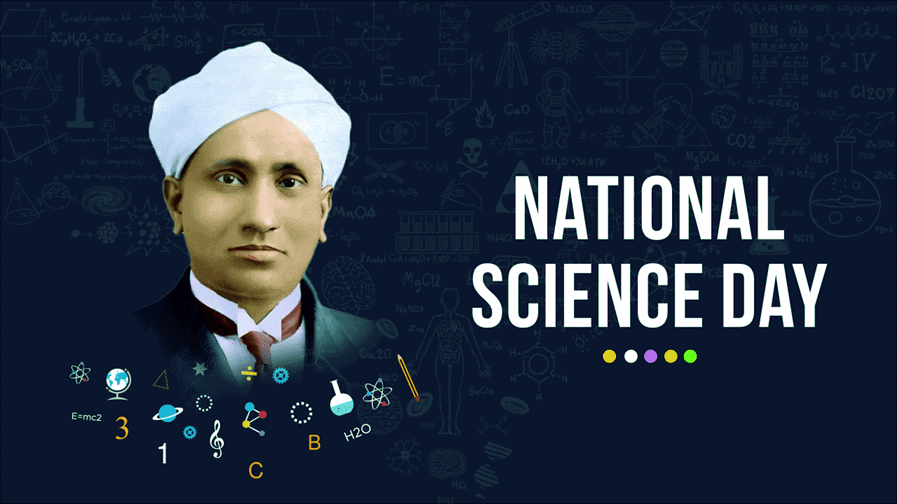
Why in News?
India celebrates National Science Day (NSD) on 28th February annually to honor Sir Chandrasekhara Venkata (CV) Raman’s discovery of the Raman Effect in 1928.
- The 2025 theme, “Empowering Indian Youth for Global Leadership in Science and Innovation for Viksit Bharat”, highlights the role of scientific innovation and youth leadership and aligns with the Viksit Bharat 2047 vision.
What are the Key Facts About CV Raman?
- Early Life: CV Raman was born on 7th November 1888, in Tiruchirappalli, Tamil Nadu. He earned his M.A. in Physics from Presidency College, Madras and contributed significantly to atomic physics and optics.
- He founded the Raman Research Institute (1948), Indian Journal of Physics (1926), and Indian Academy of Sciences (1934).
- His research spanned optics, light scattering, X-rays, acoustics, and sea colors, leading to the discovery of the Raman Effect.
- Honors & Recognition: Knighted in 1929 by the British government, CV Raman won the 1930 Nobel Prize in Physics for Raman Effect, making him the first Asian to receive a Nobel Prize in science.
- He was also honored with the Bharat Ratna in 1954, India’s highest civilian award.
- Raman Effect: It refers to the phenomenon where incoming excitation light interacts with a sample, undergoes a change in wavelength, and generates scattered light due to interactions with molecular vibrations. This phenomenon is known as Raman scattering.
- Applications of Raman Effect: It forms the basis of Raman Spectroscopy (analyzing molecular vibrations), widely used to study material properties.
- Its applications expanded after the advent of lasers in the 1960s, aiding chemical analysis by identifying substances without breaking them. It also helps forensic science detect drugs in sealed evidence bags and enables safe nuclear waste analysis using fiber-optic probes.
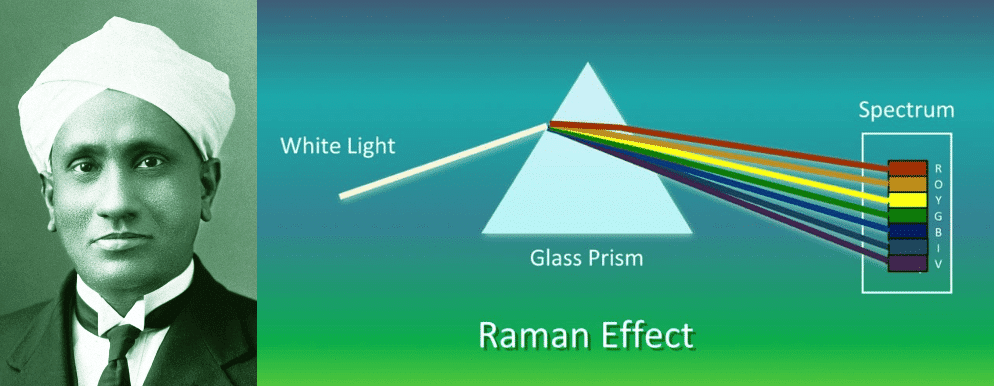
Rise of India’s Private Space Industry
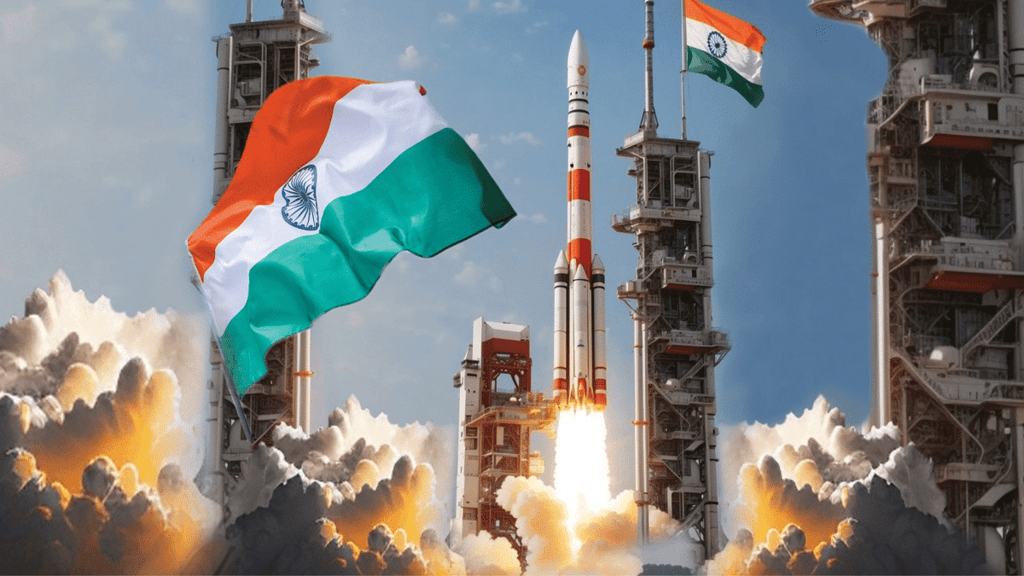
Why in News?
ISRO's upcoming launch of a US-based AST Space Mobile communication satellite marks a pivotal moment in India's emergence as a global player in the satellite launch industry. Already distinguished by achievements like the SpaDeX mission, Chandryaan-3’s lunar landing, and cryogenic engine development, ISRO is now breaking into the lucrative commercial satellite market. This commercial expansion represents a crucial step toward India becoming self-reliant and profitable in the international space economy.
What are the Key Recent Developments Related to India’s Space Sector?
- Advancing Solar Research: India’s first solar observatory, Aditya-L1, successfully reached its halo orbit at Lagrange Point-1 (L1) in January, 2024.
- The data from Aditya-L1 will enhance India’s space weather forecasting, crucial for satellite protection and communication systems.
- This marks a major step in India’s deep-space research, putting it in league with NASA and ESA.
- India is now one of only four countries to have a dedicated solar mission, alongside the US, Europe, and China (ISRO, 2024).
- Advancements in Reusable Launch Vehicles (RLV): ISRO conducted two successful Reusable Launch Vehicle (RLV) Landing Experiments—RLV-LEX-02 (March 2024) and RLV-LEX-03 (June 2024).
- Reusability can cut launch costs by 80%, making space more accessible for commercial and scientific missions (ISRO, 2024).
- The winged prototype ‘Pushpak’ was dropped from a Chinook helicopter at 4.5 km altitude before autonomously landing, proving the feasibility of future reusable rocket technology.
- The RLV tests bring ISRO closer to developing a fully reusable spaceplane, similar to SpaceX’s Starship and NASA’s Dream Chaser.
- India’s First Space Docking Experiment (SpaDeX) and Future Space Station Plans: India achieved a breakthrough in space docking technology with the SpaDeX (Space Docking Experiment) mission in December 2024.
- Mastering space docking is critical for long-duration space missions, in-orbit refueling, and space habitat construction.
- This milestone strengthens India’s future in deep-space exploration and interplanetary logistics.
- India is now the fourth country globally (after the US, Russia, and China) to achieve space docking independently.
- ISRO plans to launch the Bharatiya Antariksh Station (BAS-1) by 2035, starting with an initial modular space station segment.
- Progress in the Gaganyaan Human Spaceflight Mission: Significant advancements have been made in India’s first crewed spaceflight mission, Gaganyaan, scheduled for 2025.
- This mission aims to send a three-member crew to low-Earth orbit (LEO) for three days, marking a historic milestone for India’s space program.
- The Test Vehicle Abort Demonstration-1 (TV-D1) successfully tested crew escape systems in case of launch failure.
- ISRO has trained four Indian astronauts at Russia’s Gagarin Cosmonaut Training Center and is setting up a crew training facility in Bengaluru.
- Strengthening India’s Weather and Disaster Monitoring Capabilities: The launch of INSAT-3DS has significantly improved weather forecasting, cyclone tracking, and disaster management.
- Designed for a 10-year operational lifespan, the satellite provides real-time weather data, including temperature, humidity, and atmospheric conditions.
- This enhances India’s ability to predict extreme weather events, mitigating damage from cyclones, floods, and heatwaves.
- INSAT-3DS played a key role in tracking Cyclone Michaung in December 2023, enabling early evacuations.
- India’s Growing Role in International Space Collaborations: ISRO launched ESA’s Proba-3 mission, strengthening its reputation as a trusted global launch partner.
- This mission, designed to simulate a total solar eclipse using precision formation flying, demonstrates India’s expertise in small satellite launches and scientific missions.
- India is working with NASA for the NISAR mission (2024), a satellite to monitor climate change and natural disasters.
- Expansion of India’s Private Space Sector: With the introduction of IN-SPACe and the New Space Policy (2023), India’s private space sector has seen a rapid rise in startups, satellite manufacturing, and launch services.
- Companies like Skyroot Aerospace, Agnikul Cosmos, and Pixxel are developing indigenous launch vehicles and advanced payloads.
- Skyroot’s Vikram-S (November 2022) became India’s first private rocket launch, marking a shift towards commercial space activities.
- Green Propulsion and Sustainable Space Technologies: ISRO is actively developing eco-friendly propulsion systems, including liquid methane-LOX engines and solar-electric thrusters for deep-space missions.
- The Vikram-1 rocket (by Skyroot Aerospace) and ISRO’s future missions aim to use green propellants to minimize environmental impact.
- The Chandrayaan-3 lander used non-toxic propulsion, aligning with ISRO’s commitment to green space technologies.
- Approval of Chandrayaan-4 and India’s Upcoming Lunar Ambitions: Following the success of Chandrayaan-3, ISRO has secured approval for Chandrayaan-4, a sample return mission to the Moon.
- This mission aims to leverage India’s expertise in precision landing and in-situ lunar studies, contributing to global lunar science.
- Chandrayaan-4 will be India’s first robotic mission to return samples from the Moon, similar to China’s Chang’e-5.
What are the Key Issues Associated with India’s Space Sector?
- Limited Budget Allocation: Despite ISRO's achievements, India's space sector operates on a relatively small budget compared to global counterparts, limiting the scale of deep-space missions and technology development.
- Most funding still comes from the government, restricting private sector-led innovation and commercialization.
- ISRO's budget for 2024-25 is Rs 13,042.75 crore (about $1.95 billion). In contrast, NASA operates with a much larger budget of around $25 billion, without any reductions.
- India’s space economy is only 2% of the global space market.
- Slow Development of Reusable and Cost-Effective Launch Technologies: While ISRO has made progress with Reusable Launch Vehicle (RLV) experiments, it lags behind private companies like SpaceX (Falcon 9) and Blue Origin (New Shepard) in operational reusable rockets.
- High launch costs limit India’s ability to compete in the global commercial satellite launch market, which demands low-cost, frequent, and reusable launch systems.
- Accelerating the development of fully reusable rockets is crucial to maintaining global competitiveness.
- Rising Space Debris and Orbital Congestion: With increasing satellite launches, space debris management has become a critical challenge, posing risks to operational satellites and future missions.
- India lacks an independent space traffic management system, making it reliant on international organizations for debris tracking.
- With thousands of satellites planned for Low Earth Orbit (LEO) mega constellations, collision risks and orbital congestion will intensify, requiring urgent regulatory and technological interventions.
- A total of 3143 objects originating from 212 launches and on-orbit break-up events were added to the space object population in 2023, highlighting the growing threat of space debris.
- Delayed Implementation of Space Policy and Regulatory Frameworks: India’s New Space Policy 2023 was a major step in opening the sector to private players, but implementation delays and bureaucratic hurdles have slowed its impact.
- IN-SPACe, meant to regulate and facilitate private sector participation, is still evolving its framework, leading to uncertainty for startups and investors.
- A clear legal framework on space activities, satellite licensing, and liability in case of damages is necessary to attract global investments.
- India has over 150 space startups, but most struggle with funding, regulatory approvals, and global market access
- Cybersecurity Threats and Space Asset Protection: With growing reliance on satellites for communication, defense, and navigation, cyber threats targeting space assets pose national security risks.
- India lacks an independent Space Cybersecurity Command to protect against satellite hacking, GPS spoofing, and space-based espionage.
- ISRO currently lacks an autonomous cybersecurity division, making its satellites potential targets for hostile cyber intrusions.
- Climate Change Impact on Space Infrastructure: Extreme weather events, rising temperatures, and increasing humidity levels are posing risks to ISRO’s launch sites and ground stations.
- Coastal launch sites like Sriharikota (SHAR) and Thumba are vulnerable to cyclones and sea-level rise, potentially affecting future launch schedules and infrastructure durability.
- Climate adaptation strategies, including hardened launch complexes and alternative inland launch sites, are needed to mitigate these risks.
- Growing Competition from Emerging Space Powers: India faces increasing competition from China, UAE, and South Korea, which are advancing in lunar exploration, deep-space missions, and private sector growth.
- China’s Chang’e program is targeting lunar colonization by 2035, while the UAE’s Mars and Moon missions are attracting global partnerships.
- To maintain leadership, India must accelerate Chandrayaan-4, Venus missions, and interplanetary exploration projects.
- Delays in Strategic Military Space Capabilities: India has been slow in developing dedicated military space assets, lagging behind China’s Space Force and weaponized satellite capabilities.
- While India has anti-satellite (ASAT) capabilities, it lacks dedicated space-based missile defense and electronic warfare satellites.
- Establishing an integrated space command and defense satellite constellation is critical for national security.
- China has over 300 military satellites, while India operates with fewer for defense and surveillance.
What Strategic Measures can India Adopt to Enhance the Space Sector?
- Increasing Budget Allocation and Sustainable Funding Models: India must increase public investment in space technology while promoting private and foreign investments through Public-Private Partnerships (PPP).
- Establishing a dedicated Space Development Fund (SDF) can ensure continuous financing for deep-space missions, satellite manufacturing, and human spaceflight programs.
- Expanding ISRO’s commercial wing, NSIL (NewSpace India Limited), can drive revenue generation through global satellite launches.
- Accelerating Reusable Launch Vehicle (RLV) and Cost-Effective Launch Technologies: India must prioritize RLV development to reduce launch costs, increase frequency, and compete with private players like SpaceX.
- Strengthening Pushpak RLV technology, integrating AI-driven autonomous landing systems, and developing Methane-LOX propulsion systems can improve reusability.
- Enhancing hypersonic flight research and scramjet engine testing will enable cost-effective space travel. A dedicated RLV test center should be established for high-speed aerodynamic research.
- Expanding Private Sector and Startup Participation in Space Economy: India must fully implement the New Space Policy 2023 to enable private players to develop launch vehicles, satellites, and deep-space technologies.
- Strengthening IN-SPACe (Indian National Space Promotion and Authorization Center) will streamline approvals and reduce bureaucratic delays.
- Tax incentives, regulatory ease, and venture capital support can encourage more startups to enter the space manufacturing, propulsion systems, and AI-driven satellite services sectors.
- Fast-tracking licensing processes for private satellite launches will boost India’s competitiveness.
- Strengthening Space Traffic Management and Space Debris Mitigation: India should establish an independent Space Traffic Management (STM) system to monitor, track, and mitigate space debris following the Convention on International Liability for Damage Caused by Space Objects.
- Deploying active debris removal (ADR) satellites, using laser ablation and robotic arms, can help clear defunct satellites from orbit.
- AI-powered collision avoidance systems should be integrated into India’s growing satellite fleet.
- Strengthening international cooperation under UNOOSA and IADC (Inter-Agency Space Debris Coordination Committee) will enhance India’s role in global space sustainability.
- Fast-Tracking Space Infrastructure for Human Spaceflight Missions: To sustain long-term human spaceflight programs, India must develop space habitats, advanced crew modules, and deep-space life support systems.
- Establishing a dedicated Human Spaceflight Research Center (HSRC) will drive innovations in space medicine, astronaut training, and microgravity research.
- The Bhartiya Antriksh Station (BAS-1) roadmap should be fast-tracked for operational readiness by 2035.
- Enhancing Cybersecurity and Space Asset Protection: India must create a dedicated Space Cybersecurity Command under ISRO and DRDO to protect satellites, GPS systems, and defense space assets from cyber threats.
- Strengthening quantum encryption, AI-driven anomaly detection, and satellite firewalls will safeguard critical infrastructure.
- Implementing real-time threat monitoring systems for space-based assets will reduce vulnerabilities to hacking, GPS spoofing, and electromagnetic attacks.
- Strengthening Deep-Space and Interplanetary Exploration Capability: India must expedite missions to the Moon, Mars, and Venus, enhancing its global space leadership.
- Chandrayaan-4 (Lunar Sample Return Mission) and Mangalyaan-2 (Mars Orbiter Mission-2) should be prioritized with advanced robotic rovers, AI-driven navigation, and in-situ resource utilization (ISRU) experiments.
- Establishing an Interplanetary Research Center (IRC) will boost scientific collaboration and innovation.
- Expanding India's Satellite-Based Applications and Digital Connectivity: India must expand its satellite fleet for earth observation, navigation, and broadband internet to strengthen disaster management, agriculture, and national security.
- Deploying next-generation NavIC satellites will enhance independent satellite navigation and geospatial intelligence.
- Strengthening satellite-based quantum communication will enhance secure data transmission and defense applications.
- Climate-Resilient Space Infrastructure and Alternate Launch Sites: To mitigate risks from climate change, sea-level rise, and extreme weather, India must develop inland launch sites beyond Sriharikota.
- Establishing a second launch complex in central India will provide operational redundancy during adverse weather conditions.
- Strengthening ISRO’s weather monitoring satellites with advanced hyperspectral imaging and AI-driven climate modeling will improve India’s disaster response.
- Implementing eco-friendly, non-toxic green propulsion technologies will align India’s space program with global sustainability goals.
Conclusion
India's space sector is at a transformative juncture, with ISRO making significant strides in commercial satellite launches, reusable launch vehicles, deep-space exploration, and human spaceflight. With sustained efforts, ISRO can drive technological innovation, boost economic opportunities, and contribute to global space exploration, ensuring India’s long-term leadership in the space economy.
Ultra-Conserved Elements
Why in News?
Researchers have discovered a reason why certain segments of the human and mouse genomes (Tra2b gene) have remained unchanged for 80 million years. These segments, known as ultra-conserved elements (UCEs), play a vital role in regulating protein production
What are Ultra-Conserved Elements (UCEs) in DNA?
Ultra-Conserved Elements (UCEs) are long, highly conserved DNA sequences (200+ base pairs) that have remained unchanged for millions of years across multiple species, including humans, mice, rats, chickens, and even fish.
Key Characteristics:
- Found in both coding (gene) and non-coding (regulatory) regions of the genome.
- Do not tolerate mutations, meaning they remain identical across species for tens of millions of years.
- Many UCEs do not code for proteins but play crucial roles in gene regulation and cellular function.
Their importance:
- Evolutionary Significance: Their extreme conservation suggests they are essential for survival, as any mutation would likely be harmful.
- Gene Regulation: UCEs may function as enhancers or silencers, controlling when and where genes are activated.
- Developmental Roles: They are often linked to brain development, fertility, and immune response.
- Disease Prevention: UCEs may protect against genetic disorders and cancers by stabilizing gene expression.
Why do Human and Mouse Genomes overlap?
Humans and mice share a common mammalian ancestor that lived around 80 million years ago.
Genomic Similarity:
- Around 85% of mouse genes have direct counterparts in humans.
- Nearly 500 UCEs are identical between humans and mice, despite millions of years of evolution.
- Many fundamental processes like cell division, metabolism, and brain function are similar between species, necessitating high conservation of crucial DNA regions.
Medical Research:
- Because of these similarities, mice serve as a model organism for studying human genetics, diseases, and drug responses.
- UCEs help scientists understand gene function across species, leading to insights into evolution and biomedical advancements.
|
91 videos|488 docs|209 tests
|
FAQs on Science & Technology: March 2025 UPSC Current Affairs - Science & Technology for UPSC CSE
| 1. What are the key factors driving India's AI revolution? |  |
| 2. How is biotechnology contributing to India's economic growth? |  |
| 3. What are the impacts of space debris on satellite operations? |  |
| 4. What measures is India taking to address the space debris crisis? |  |
| 5. How can students prepare for UPSC exams with a focus on current affairs like AI and biotechnology? |  |
















